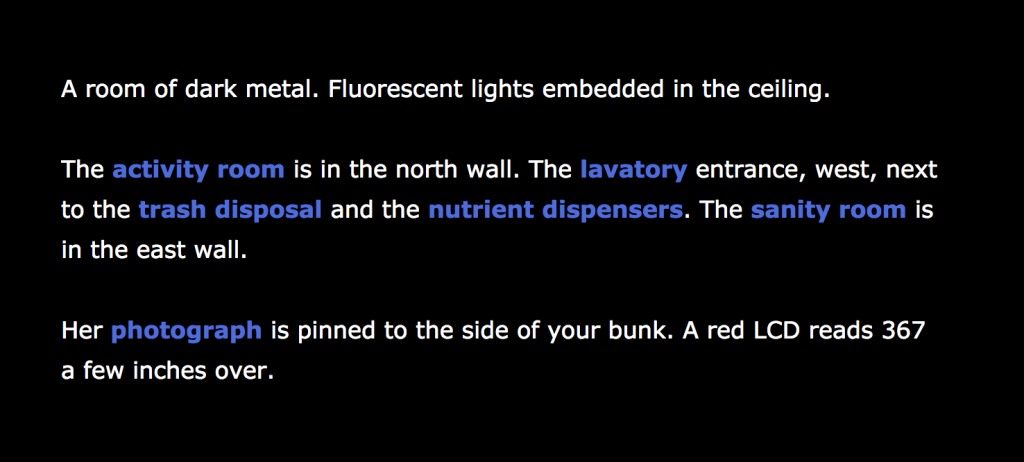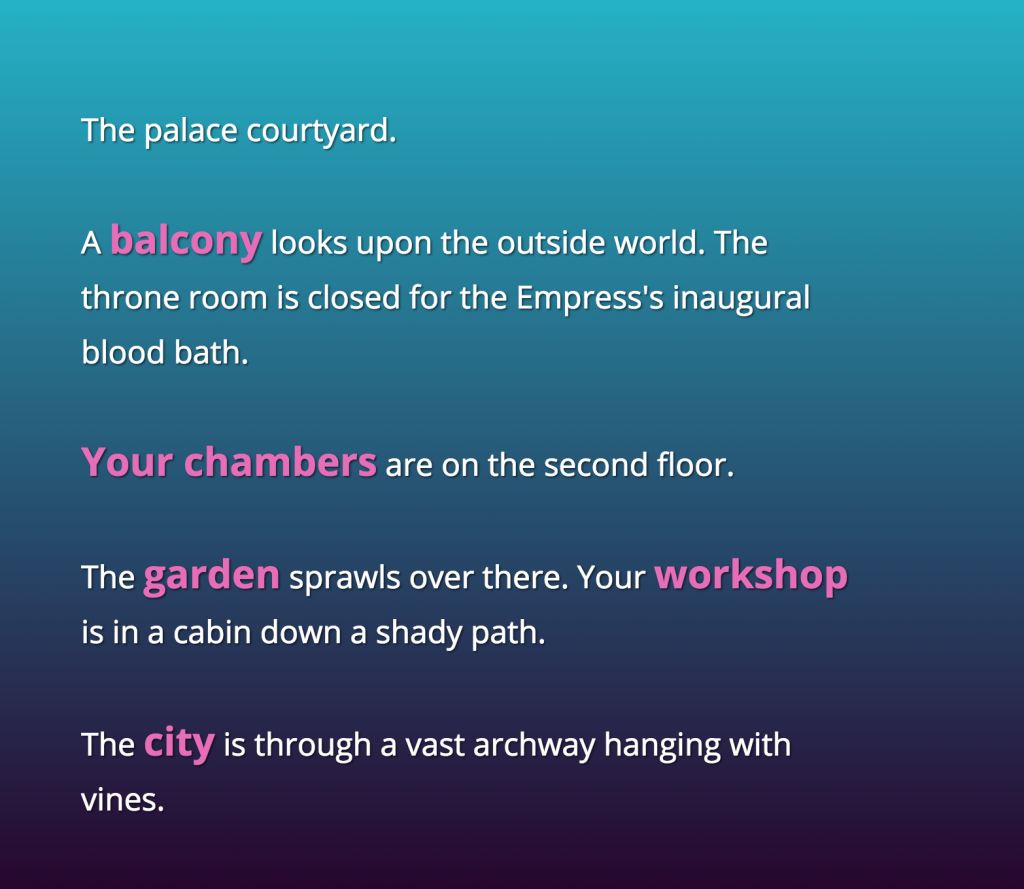Read: Interactive Fiction and Other Game-like Forms
Play:
- Galatea, Emily Short (2000)
- Ad Verbum, by Nick Monfort (2001)
- Deviant: The Possession of Christian Shaw, by Donna Leishman (2004)
- Game Game Game and Game Again, Jason Nelson (2006)
- Howling Dogs, by Porpentine (2012)
- With Those We Love Alive, Porpentine (2014)
- Device 6 (iOS only)
- Blackbar (android and iOS)
Blog: After reading Rettberg’s chapter on the evolution and variety of digital literary games, explore the works listed above and choose at least two to explore in-depth. Compare the uses of game interaction to communicate narrative or poetic ideas. How do game goals and puzzles involve the “interactor” in finding meaning in the works? Are there clear goals or is the game framework an excuse to explore more literary ideas? How do the works engage your imagination?
IN-CLASS TOPICS/ACTIVITIES:
TALK: Interactive Narratives/Games
Simulations:
Hamlet on the Holodeck, by Janet Murray
IF dream: Story Simulation
games as literature and experience, where you play a role in the story and can change the story
Natural Language Processing
ELIZA: 1966 Joseph Weizenbaum, MIT Computer Science professor. Program accepted natural language as input. ELIZA effect.
Making Virtual Space:
Hunt the Wumpus 1972 Gregory Yob
Simulates complex spaces.
Infocom > Zork (1980)
King’s Quest V, 1991 (Inforcom couldn’t compete)
Facade (2006) – simulated interaction with characters, drama
Procedural Simulation? A problem of limits…
Human/Machine storytelling
Ian Bogost :
system operations (big goals, narrative arcs)
unit operations (small actions)
Works:
Galatea, Emily Short (2000)
Galatea cheatsheet
Ad Verbum, by Nick Monfort (2001)
Deviant: The Possession of Christian Shaw, by Donna Leishman (2004)
Game Game Game and Game Again, Jason Nelson (2006)
Howling Dogs, by Porpentine (2012)
With Those We Love Alive, Porpentine (2014)
More Games:
- Between Treacherous Objects, Jason Nelson
- This is How You Will Die, Jason Nelson
- Zarfhome
- All Roads, John Ingold
- Ad Verbum, Nick Montfort
- Whom the Telling Changed, Aaron Reed
- Sleep is Death, by jason Roher
- Blue Lacuna, Aaron Reed
- The Intruder, Natalie Bookchin
- Rhizome tag: Game
IN-CLASS EXERCISE:
IF in Twine”
Making Space: “establishing shot” is also an index to the places of the story


- Set scene, where are we at start?
- Connect spaces (links allow traversal of spaces… or not)
- Place obstacles, objects, characters and other narrative details
- Set challenges (narrative conflict) along the way to reach goal (game play)
- Add narrative or poetic detail, evoke a world or character
- Make a way out, end point(s) or goal(s)
ELD Entry (20%)
Write a research entry for the Electronic Literature Directory (ELD) about a term or a work of a electronic literature. The essay should be 500-750 words and include a bibliography, screen gabs or screen captures. A list of terms and works will be provided.
- First draft is due 03/01 – 5%
- Final draft is due 03/22 – 15%